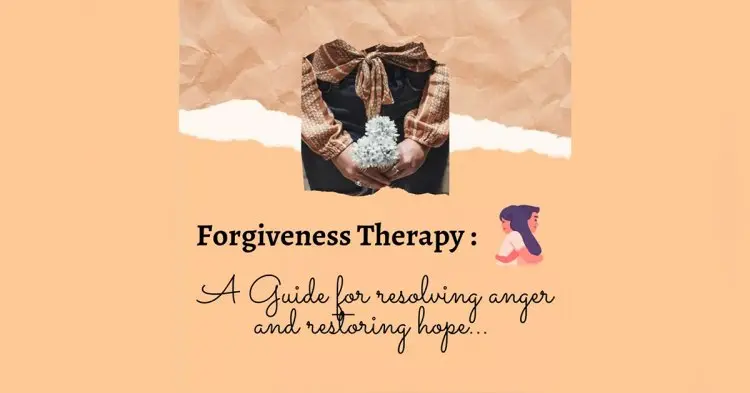Forgiveness Therapy
Forgiveness Therapy : A guide for resolving anger and restoring hope.

Forgiveness is the process of uncovering and letting go of anger at someone who has caused pain. This process can be the path to healing in many situations, as anger is frequently at the core of a client's issues and may be the center of a number of disorders.
The forgiveness therapy model is flexible enough to be integrated into any therapeutic approach. Fostering forgiveness in therapy involves uncovering the depth of the client's anger, obtaining commitment to forgive, and working on being able to forgive. The final phase of this therapy is the discovery of meaning in what has been suffered, finding a new purpose in life, and exploring one's own faults and the need to be forgiven by others.
1. Approaches
In forgiveness therapy, there are four basic
phases to the treatment. 1st Phase First, the uncovering phase seeks to explore not only the anger but also the depth of it. Often a client comes to therapy with a much deeper anger than he or she has been aware. Injustices are explored here as well as the complications to one's life from the interplay of injustice and anger, which can include sadness, altered life conditions such as changing jobs or partner-separation, and the subtle development of a pessimistic worldview (thinking, for example, that all bosses are only out for themselves if the client was dismissed from a career).
2. 2nd Phase
The second phase, called the commitment to forgive, includes understanding what forgiveness is and is not. Forgiveness is a moral virtue (as are justice, patience, and kindness, as examples) in which an unjustly treated person offers the cessation of resentment toward the injurer along with a positive, merciful response to him or her such as compassion, understanding, and as a later development, even love. To forgive is not to condone, forget, or reconcile because none of these are moral virtues. One can forgive without reconciling, for example, if the offending person continues with hurtful actions without remorse or any sense of altering that pattern of behavior.
3. 3rd Phase
The third phase is where the client engages in the work of forgiveness. This starts with cognitive exercises.
The therapist asks the client/patient to understand the offending other's childhood with a focus on the injustice that this person may have received from others. This cognitive perspective continues through the offending person's adolescence and adulthood, again with an emphasis on the injustices that he or she has suffered. The point is to help the client, not to condone what happened, but to better understand the struggles that the offending person has had in life.
4. 4th Phase
The fourth phase includes the discovery of meaning in what has been suffered, finding a new purpose in life once equipped with the process of forgiveness, and an exploration of one's own faults and the need to be forgiven by others.
These activities are then usually followed by emotional relief in that anger, anxiety, and depression diminish and a sense of hope and enhanced self-esteem increase. Three decades of research on the Process Model of Forgiveness shows strong empirical support for emotional healing in the client/patient who follows this psychotherapeutic process.






